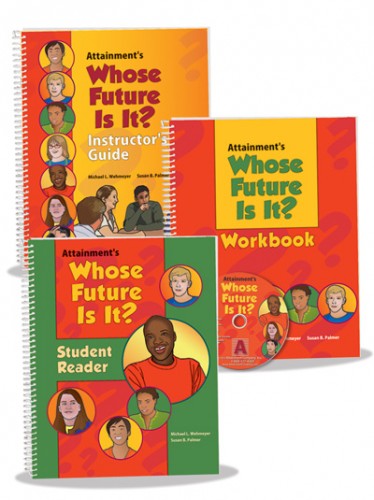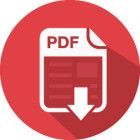Self-determination has become a top priority best practice in special education. There is ever-increasing emphasis on self-determination as a major outcome for youth with disabilities. Research has shown that with this curriculum students achieve positive adult outcomes after high school. These results were achieved by Dr. Michael Wehmeyer, coauthor with Susan B. Palmer.
Whose Future Is It? is a comprehensive curriculum that does exactly what its title promises—presents a self-regulated sequence of steps that introduce adolescents to the transition process. And it does this through carefully constructed language designed to speak directly to students.
It covers decision making skills, problem solving, negotiation, compromise and leadership, all of which enable students to take a meaningful role in planning for their future. As mandated in IDEA, when transition issues are discussed in the IEP meeting, students must be invited. Whose Future shows students how to contribute to their IEP meetings. It culminates with students writing goals and taking an increasingly active part in their IEP meetings.
Features:
- Facilitates active student participation in creating their IEP
- Software offers text-to-speech option for the Student Reader
- Workbook designed with a number of pictures for self-directed work and minimal teacher support
- Includes activities to practice and discuss decision making, problem solving, negotiation, compromise and leadership, goal setting, and communication in small groups
Whose Future Is It? conforms to Universal Design features that help students who are not strong readers to self-direct as they work through it. A recent study proves that all students who use this program gain transition knowledge and skills, but those who used technology such as Whose Future Is It? Software show even greater progress.
This product includes a Student Reader, Workbook, Instructor’s Guide, and Software:
1. The Student Reader focuses on how the IEP process has vital future applications for students with disabilities. It encourages them to explore self-awareness and master skills like problem solving, decision making, goal setting, and small group communication. The Reader is written at a fourth grade level and is heavily illustrated.
2. The Software adds speech and text highlighting to the Student Reader. Text is read by professional narrators and students can click on any word to hear it spoken. A multiple choice comprehension assessment follows each chapter. All student data are stored. The Software can be displayed on a Smart Board for classroom presentations.
3. The Workbook features a ton of activities that match Student Reader content. It includes vocabulary instruction, chapter review, planning worksheets, a glossary, and multiple choice questions.
4. The Instructor’s Guide combines materials in the Reader and Workbook into a single lesson plan. It includes a CD with PDFs of the Student Reader and Workbook and a customizable Word document of the student worksheets.
15 Chapters divided into three Sections:
Section One: Getting to Know Your IEPTopics include transition services, who attends your IEP meetings, abilities and interests, disability stereotypes, and IEP outcomes.Section Two: Decisions and GoalsTopics include options and goals for current school environment, post-secondary education, independent living, employment, and recreation and leisure.Section Three: Your IEP MeetingTopics include self-advocacy, assertiveness, IEP preparation, and how to run your IEP meeting.
Student Reader, spiralbound, 214 pages; Workbook, spiralbound, 186 pages; Instructor's Guide, spiralbound, 2011.
Software is compatible with Windows XP or higher, Mac OS 10.6 or higher; accessible with mouse, touch screen, and 1 or 2 switches.
Introductory Kit includes one of each of the Student Reader, Workbook, Software (Win/Mac CD), and Instructor’s Guide with PDFs of the Reader and Workbook on Win/Mac CD with Classroom License for printouts.
Classroom Kit Includes four Student Readers, eight Workbooks, one Software, and one Instructor’s Guide with PDFs of the Reader and Workbook on Win/Mac CD with Classroom License for printouts.
- Copyright 2011

 Proud to be Canadian
Proud to be Canadian

